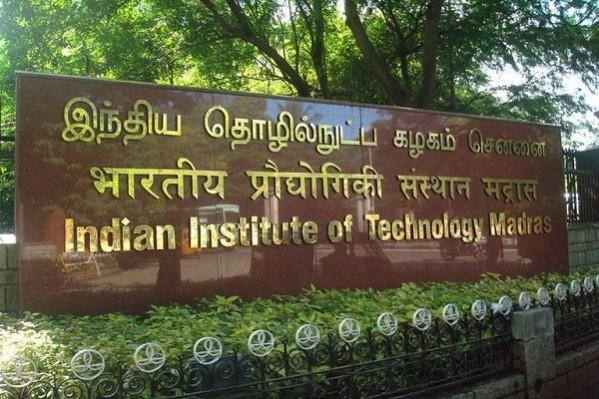
India's education ecosystem is today being asked to do two things at once: scale world-class research and technology capacity while radically widening equitable access and foundational quality across 1.4 billion citizens. Recent signals the Ministry of Education's set of releases (including the India Rankings 2025 and the Council of IITs meeting at IIT-Delhi), progress reports on NEP implementation, and visible institutional partnerships such as IIT-Kanpur's teacher-training in AI for Uttar Pradesh show ambition and direction. Yet they also expose the structural tension between national strategy and state-level execution: the policy scaffolding is sturdier than the delivery apparatus.
A few concrete facts set the scale. The Department of School Education & Literacy reports that India's school system reaches roughly 24.8 crore students across 14.72 lakh schools and employs over 98 lakh teachers (UDISE+ 2023–24) a governance and human-resource challenge that is unprecedented in scope. Simultaneously, the Ministry has been publicly linking the Indian Institutes of Technology more closely to national strategy: recent Council meetings and ministerial interventions position the IITs as anchors for innovation, skilling and institutional reform.
That duality massive scale in school education; concentrated excellence in premier technical institutes is India's opportunity and its risk. The opportunity: India can create a powerful, endogenous pipeline from school-level foundational skills through to high-end research and technology entrepreneurship inside the IIT ecosystem. The risk: without deliberate, system-level bridges (teacher capacity, regional access to research capital, and clear metrics of accountability) excellence will remain geographically and socially concentrated, while foundational gaps persist for most learners.
Where recent moves matter most
- National strategy is coherent and ambitious. The NEP 2020 remains the blueprint: multidisciplinary undergraduate education, emphasis on foundational literacy and numeracy, teacher professionalization and greater autonomy for HEIs. The Ministry's public calendar, frequent press notes, national ranking releases and the stacking of meetings with IIT leadership, signals a continuing political will to translate NEP goals into institutional priorities.
- IITs are stepping beyond ivory-tower research into system impact. Examples matter: IIT-Kanpur's teacher training programme with UP's SCERT to train hundreds of science teachers in computational thinking and AI shows how an IIT can directly seed classroom capability at scale; training 750 teachers could indirectly affect millions of students across PM-SHRI and other state schools. If replicated smartly, such programs turn centres of technical excellence into redistribution mechanisms of applied capability.
- Global rankings and soft power are improving, but they're not the whole story. Press notes celebrating improved placements in QS and India Rankings help brand India's universities, attract talent, and create confidence for private investment. But rankings capture one dimension research citations, selectivity, and perceptions while operational quality at scale depends on teacher availability, governance of state boards and the logistics of assessment and remediation.
The core implementation challenges
First, capacity mismatch. Converting NEP's designs into classroom outcomes requires tens of thousands of well-trained teachers, assessment redesign, and digital infrastructure not sporadic pilot programmes. The UDISE+ numbers underline the scale of human-resource mobilization required.

Second, unequal readiness across states and universities. NEP gives wide latitude to states and institutions to adopt reforms, but that flexibility produces unevenness. Recent examples sudden shifts to written exams for NEP courses or local policy reversals show that policy coherence at the Centre does not guarantee synchronized state-level readiness. Unless the Centre provides clear transitional supports (capacity funding, model curricula, centre-state technical teams), reform will be patchy.
Third, misalignment between elite research and grassroots schooling. IITs produce world-class research and start-ups; school systems seek foundational competency and large-scale skilling. The missing middle is translational architecture: vocational pathways, regional research-application centres, teacher residency models in HEIs, and funding instruments that tie institutional prestige to demonstrable state-level impact.
What must be done - five practical imperatives
- Institutionalize 'IIT-State Partnership Cells'. Move beyond episodic MOUs. Every IIT should host a partnership cell mandated to cobuild teacher-training pipelines, regional incubation of edtech and curricular co-design with state boards. These cells should have defined KPIs (number of teachers certified, demonstrable student learning gains, edtech pilots scaled to districts). This turns prestige into predictable public good delivery.
- Reorient funding to transitional capacity. The Ministry's release of HEFA funding and other targeted infrastructure grants is welcome; but a parallel 'NEP Implementation Fund' must underwrite teacher residencies, district learning labs and digital access programs for the most underserved districts. Grants should be outcome-tied and co-funded by states to ensure buy-in.
- Build measurable bridges between school data (UDISE+) and higher-ed research metrics. Today's administrative datasets can be retrofitted to report learning outcomes and feed into university research agendas. Universities that demonstrate measurable contribution to district learning gains through co-authored research or evidence-backed pilots should receive strategic incentives.
- Scale teacher professionalization using technology AND practice. Training delivered at IIT campuses (five-day residential modules) is transformational but limited by reach. Create a blended model: short residential intensives at IITs followed by district-based coached practice and online micro-credentials validated by university assessment. This keeps quality high while multiplying reach.
- Protect equity while pursuing excellence. Ranking and reputation should not become proxies for resource allocation. A policy of conditional funding where institutional grants are contingent on demonstrable outreach to disadvantaged regions or demonstrable intake diversification will keep the growth of elite institutions aligned with national goals.
A final, strategic imperative: treat the next five years as a systems engineering problem
Education reform at this scale is not a sequence of clever projects; it is systems engineering. It requires mapping flows (students, teachers, data, funds), identifying bottlenecks (teacher supply, assessment architecture, regional labs), and creating feedback loops (data-driven policy adjustments, public dashboards). The IITs are natural nodes in that engineered network, technical capacity, research orientation and experimental culture but they will not close the loop by themselves.
An urgency and an opportunity
India has the policy playbook, rising institutional capability and the political attention to reimagine its education ecosystem. The remaining task is institutional craft: aligning incentives, funding and accountability so that excellence at the top becomes diffusion across the system. "Ambition without architecture" is the danger; the corrective is deliberate, measurable, partnership-driven scaling. If the Ministry, the IITs and state systems can convert recent momentum into an engineered implementation plan, resourced, timebound and transparent, India will not only climb rankings; it will create a resilient education ecosystem that feeds innovation, social mobility and national capability for generations.


![Too drunk to walk? Karnataka to drop heavily intoxicated revellers home, sets up rest centres for New Year crowds [Watch] Too drunk to walk? Karnataka to drop heavily intoxicated revellers home, sets up rest centres for New Year crowds [Watch]](https://data1.ibtimes.co.in/en/full/826552/too-drunk-walk-karnataka-drop-heavily-intoxicated-revellers-home-sets-rest-centres-new-year.png?w=220&h=135&l=50&t=40)


![Too drunk to walk? Karnataka to drop heavily intoxicated revellers home, sets up rest centres for New Year crowds [Watch]](https://data1.ibtimes.co.in/en/full/826552/too-drunk-walk-karnataka-drop-heavily-intoxicated-revellers-home-sets-rest-centres-new-year.png?w=220&h=138)


![Too drunk to walk? Karnataka to drop heavily intoxicated revellers home, sets up rest centres for New Year crowds [Watch]](https://data1.ibtimes.co.in/en/full/826552/too-drunk-walk-karnataka-drop-heavily-intoxicated-revellers-home-sets-rest-centres-new-year.png?w=220&h=135)


